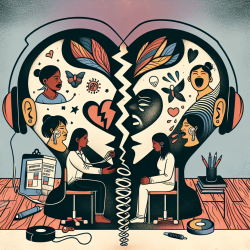The landscape of mental health interventions is rapidly evolving, with Internet-based programs becoming an increasingly popular alternative to traditional face-to-face therapy. A recent study titled Preferences for Internet-Based Mental Health Interventions in an Adult Online Sample: Findings From an Online Community Survey provides valuable insights into community preferences for these online interventions. This blog aims to help practitioners implement these findings to improve their skills and encourage further research in the field.
Key Findings from the Study
The study surveyed 438 Australian adults to understand their preferences for various aspects of Internet-based mental health interventions, including duration, frequency, modality, and setting. Here are some of the critical takeaways:
- Preference for Shorter Sessions: Participants preferred brief sessions spread over multiple days rather than long, single sessions. For instance, ten 12-minute sessions over ten days were favored over a single 2-hour session.
- Tailored Programs: There was a strong preference for programs tailored to individual needs, even if this required additional time for assessment.
- Modality of Content: Text and images were preferred over video content, indicating that a mixture of modalities might be more acceptable.
- Setting of Use: Most participants preferred accessing online programs through a laptop or desktop computer at home rather than on mobile devices or at work/school.
- Acceptance of Online Programs: While there was high acceptance of online mental health programs, face-to-face treatment was still slightly preferred.
Implications for Practitioners
Practitioners can leverage these findings to enhance the effectiveness and acceptance of Internet-based mental health interventions:
- Design Short, Engaging Modules: Develop interventions that consist of brief, frequent sessions to align with user preferences and enhance engagement.
- Tailor Interventions: Invest time in assessing individual needs to provide tailored content, which can significantly improve user satisfaction and outcomes.
- Use a Mix of Modalities: Incorporate text, images, and optional video content to cater to different learning styles and preferences.
- Promote Accessibility: Ensure that programs are easily accessible on laptops and desktops, and consider the home environment for privacy and comfort.
- Educate and Build Trust: Address concerns about the credibility and privacy of online programs to increase acceptance, especially among older and less tech-savvy populations.
Encouraging Further Research
While this study provides a solid foundation, further research is needed to explore the nuances of community preferences and the effectiveness of tailored interventions. Practitioners are encouraged to participate in and support research initiatives that aim to refine and optimize Internet-based mental health programs.
To read the original research paper, please follow this link: Preferences for Internet-Based Mental Health Interventions in an Adult Online Sample: Findings From an Online Community Survey.










